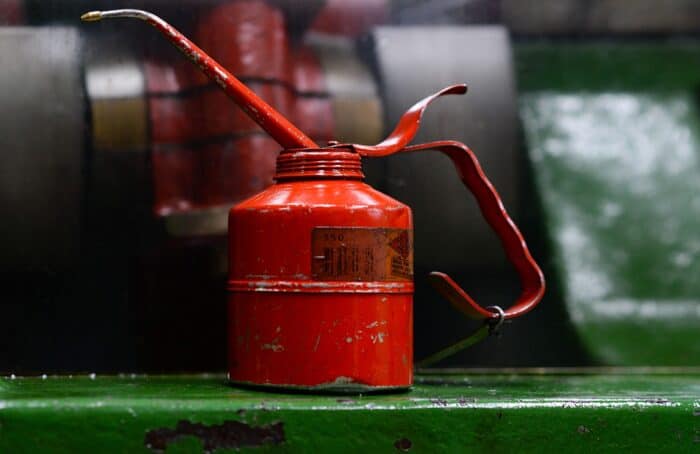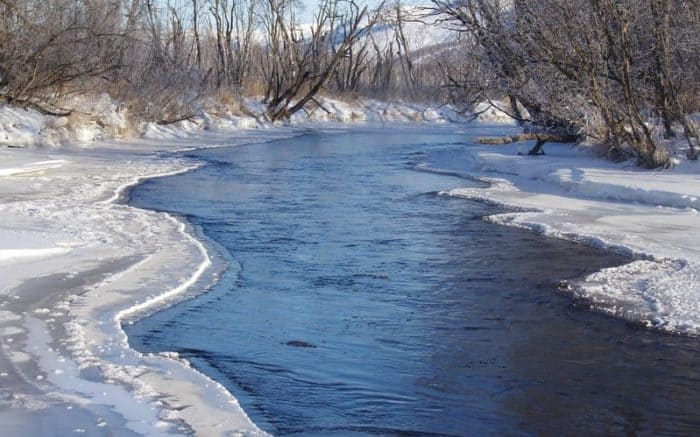Why Does Oil Float on Water?
Oil floats on water simply because oil is not as dense as water. This is doubly true in salt water which is even more dense than freshwater, meaning oil will remain on top where it can be seen and it poses a threat to marine life. As responsible boaters we need to make sure we avoid letting any oil spill into the water when doing things like changing oil. If it does happen, doing what we can to clean it up is also a top priority.
Why Oil Floats
The property of floating and what is able to float on water is a matter of densities. Density relates to mass per unit volume so in a straight up comparison of the same volume, a cubic centimeter of water’s mass is a lot more than the mass of a cubic centimeter of oil. Because the water is denser and has more mass, the buoyant force keeps the oil on top and the water below.
Liquids like corn syrup or mercury are much more dense and heavy than water and they will sink. However, oil and alcohol and less dense liquids will always float on the surface.
How Oil Molecules Work with Water Molecules
The molecular structure of water is one that pretty much everyone knows – it’s H2O. That means two hydrogen atoms bonded with one oxygen atom. This makes a water molecule polar. The charge distributed across the molecule isn’t an even one. The oxygen atom gives it a partial negative charge but the hydrogen atoms have a partial positive charge. Thanks to these charges the molecule is able to form strong hydrogen bonds. This polarity allows many substances to dissolve in water, most notably salt. The charge helps dissolve the chemical bonds in salt molecules and then the salt can diffuse in the water.
The problem, or maybe the benefit, of oil is that it is not polar. Oil is hydrophobic, which literally means water fearing, and that prevents them from mixing. It won’t react to the charge in water molecules because an oil molecule doesn’t have one of its own and that means the two have no attraction. Instead, because of that lack of charge, the two molecules repel each other.
If oil was more dense than water, this repulsion at a molecular level would force the oil to sink to the bottom and form a layer at the bottom of the ocean. But because it’s less dense what happens is it stays on top.
You can clean oil in the wash specifically because of the molecular properties of each. Detergent molecules are designed to attach to both water and to oil so that it creates an emulsion. That’s what you try to make any time you make a salad dressing though it will always be an unstable one. But a stable version in something like mayonnaise binds acids and fats together. That’s sort of what happens when your clothes go through the wash.
The detergent acts as an emulsifier and binds to both water and oil on your clothing. It pulls the oil away and into the water where it gets drained away at the end of a wash cycle. This is why washing in water alone is an ineffective method of getting things clean, especially if they’re greasy.
Oil In Rivers
An oil spill in a river does not work the way an oil spill in the ocean does and that can be a problem. Just because oil and water molecules don’t technically mix doesn’t mean a temporary mix can’t be forced. You can see this at home if you put oil and water in a cup and then mix it with a fork. For a while, the two liquids will mix together, though not evenly, and beads of oil will be visible all through the water. This is essentially what happens if oil gets into a fast moving river.
Freshwater is already less dense than saltwater, so the balance between oil and water is less pronounced. The churning of a river moving at speed will force the oil to mix in, at least temporarily. If oil spills in a moving river it’s essentially impossible to clean up at that point.
Can Any Oil Sink in Water?
In strictly scientific terms the answer to this is almost always no. But again, we have to remember rivers and, in specific, the 2010 Kalamazoo River oil spill. A crack in an oil pipeline released large quantities of diluted bitumen into the river. Diluted bitumen is a kind of heavy crude oil that came from the Canadian oil sands.
The problem with this specific oil spill was the nature of that diluted bitumen. While some lighter components managed to evaporate right away, it left an even heavier product that actually sank to the bottom of the river.
The result of this spill was that a 35-mile stretch of the river had to be shut down to the public and the entire cleanup took a staggering five years to complete. The company that owned the spill was forced to dredge the river to pull up all of the spilled bitumen and contaminated soil.
Now this is not a kind of oil you’re likely to ever have in your possession let alone spill into the water, but it does prove an exception to the rule that oil will always float. Though rare, there are some certain exceptions where the density means it ends up on the bottom of the water instead.
Ironically, you may have noticed ice cubes float in oil rather than the other way around but that is again because ice has a much different density than water. Hug ice bergs float on water too, don’t forget. The density difference is significant but when the ice melts, the liquid water will create that upward force again to push the oil up.
The Bottom Line
Oil floats on top of water because oil is less dense than water and it is what is known as hydrophobic. Because water is polar and oil is not, the two substances repel each other. Oil’s lower density means when it gets repelled, it ends up on the surface rather than at the bottom.
Categories: Beach















